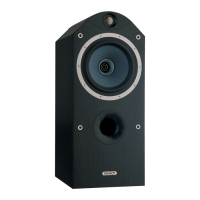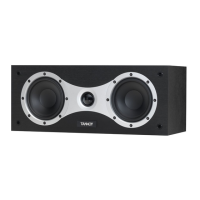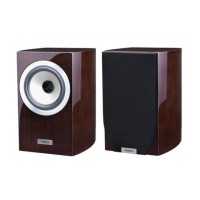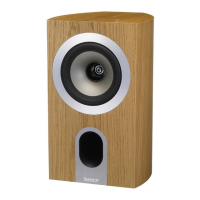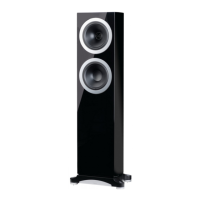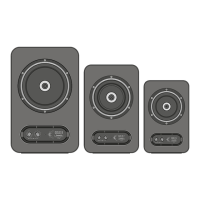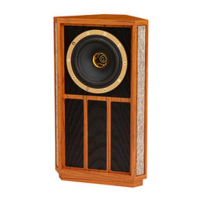6
1.3: DESIGN PHILOSOPHY
The design of an active monitoring system encompasses many interdependent components: drive units, enclosure, amplifiers
and so on. For the Ellipse development programme, each element has been re-examined, looking for new ways of doing things,
free of the limitations imposed by accepted techniques, and finding solutions with imagination and flare.
Setting new standards for quality in reference monitoring, the Tannoy Ellipse represents a new generation of active reference
monitors featuring wide bandwidth technology. By linking the Tannoy Dual Concentric™ driver with a time-aligned Tannoy
WIDEBAND
™ SuperTweeter™ in a tri-amped active system, carrying on the consistent frequency response and dispersion
up to and beyond 40kHz, a true wide bandwidth monitoring system has been created for use with contemporary high rate digital
audio.
Considerable design effort has gone into finding ways to move away from the conventional rectangular enclosure with its
uninspiring appearance, resonant flat panels, internal standing waves and high-frequency diffraction problems. The resulting
elliptical cabinet has a lot of advantages, and not just in the looks department.
The critically designed amplifier module provides high power output, low distortion and a dedicated package of ASP to optimise
the full acoustic potential of the driver and enclosure technology in Ellipse.
TANNOY DUAL CONCENTRIC™
A complex driver design principle in itself, the Dual Concentric™ loudspeaker unit was first patented by the company in 1947.
The continuous process of acoustic and materials development has brought us to the compact, sophisticated unit used in Ellipse
- comprising dual magnet assembly, high frequency Tulip WaveGuide™ and injection moulded polypropylene low/mid frequency
cone.
The clear acoustic advantages of the Dual design are not trivial matters to get right. For example, the cone is required to
simultaneously reproduce the lower six octaves of the frequency spectrum, whilst acting as a continuation of the hyperbolic high
frequency horn. The high frequency driver itself has to cover 4 octaves from midrange to 20kHz, with consistent amplitude, phase
and dispersion.
However, the design effort is worth it, as the intrinsic advantages of the Tannoy Dual Concentric™ are numerous.
• There is a coincident point source across the frequency spectrum, high, mid and low.
• The high sensitivity of the HF low-pressure horn driver gives excellent headroom and freedom from thermal compression.
• The intrinsic near time-alignment of the two component parts of the driver design allows true time-alignment to be achieved
with a limited amount of electronic phase / time manipulation in the active crossover filters.
TANNOY
WIDEBAND
™ SUPERTWEETER™
Continuing the frequency response to 50kHz, the pod-mounted SuperTweeter™ uses a specially developed aluminium alloy and
carbon fibre dome with a rare earth magnet, and is driven by a dedicated 30W IC power amplifier with 80kHz bandwidth. The
SuperTweeter™ is time-aligned to the Dual Concentric™, over a wide horizontal dispersion, using a fourth order Gaussian hi-
pass filter and critical physical positioning.
The crossover frequency is very high at 14kHz, well away from the mid frequency band where sensitive stereo location information
is concentrated. Listening at 1 metre on axis with the high frequency horn, the precise point where the signals synchronise, the
SuperTweeter™ is undetectable as a separate source.
